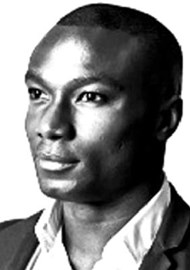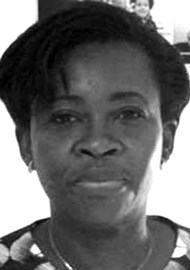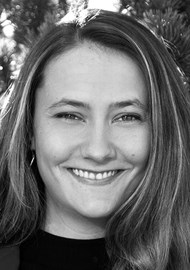The Côte d’Ivoire (RCI) is a large country on the West African coast. It has recently launched a pioneering neonatal hearing screening programme. Dr Cheka Spencer caught up with Prof Marie-Josée Tanon to discuss this and other recent developments which can serve as a roadmap for comparable health systems. Cheka also spoke to Miss Stephanie Unterrieder of MED-EL, to discuss the latest advancements with the Hearing Healthcare Alliance whose objective is to support and initiate development in hearing healthcare.
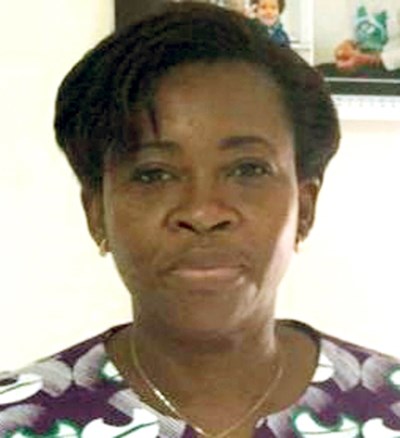
Marie-Josée Tanon-Anoh,
Clinical Lead for ENT, Hôpital Mère Enfant Dominique Ouattara de Bingerville, Côte d’Ivoire;
Professor; Université F. Houphouet Boigny, Abidjan, Côte d’Ivoire.
Prof Tanon, can you give us some background of RCI and its healthcare system?
RCI has a mixed health system. The state has developed its public health system with three levels - the first one being primary care i.e. community service, maternity services, dispensaries. The second level being district general hospitals, and at the third level are the CHU (Centre Hospitalier Universitaire/University Hospital) or CHR (Centre Hospitalier Regional/Regional Hospital). Alongside this public health system, which is spread throughout the country, there are private hospitals also spread throughout, but mostly located in the big cities.
Can you tell us about the situation in the field of ENT?
ENT has a long history in RCI with a well-established training programme that has been in place for a long time, receiving trainees from other francophone countries. There are approximately 70 ENT specialists in the country. This is more than other LMIC but, nonetheless, not enough for our population of around 25 million. Most of these are also located in the capital of Abidjan and the other big cities of Bouaké and Yamoussoukro.
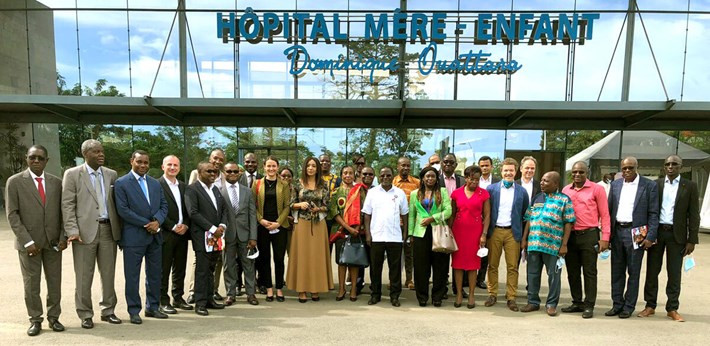
First international newborn hearing screening training for Francophone Africa.
Participants from Benin, Cameroun, Gabon, Guinea, Mali and Senegal.
Training and sharing experienceby the SIORL (RCI ENT Society), MED-EL and Path Medical.
What are the most common conditions?
Most of the presentations are related to infection. These mostly affect children. After this we have deafness which is, as you know, underreported. A high proportion of deafness is related to infection, both post-natal and pre-natal. Then after this is trauma and then ENT oncology.
Are there many allied professionals e.g. SALT and audiology?
These are even less than ENT specialists. We have established in RCI a training pathway for state registered nurses (SRN) who specialise in anaesthesia, neonatology etc. Some of these are specialists in ENT. In some settings where there is one ENT specialist in a hospital, there may be two or three SRN working alongside them. Some of these would be subspecialised in audiology as we don’t have a training pathway for this yet. Some ENT specialists would have had some training in audiology as part of their training. We do have some SALT specialists (around 10) who were trained abroad but these are all in the private sector. We have nonetheless started a programme in SALT, and the first 10 diplomates will graduate this year.
What are the challenges in healthcare and, in particular, ENT healthcare provision?
The paucity of ENT specialists and allied health professionals is the first big challenge. The second is access to technology which limits our provision of certain ENT conditions e.g. deafness.
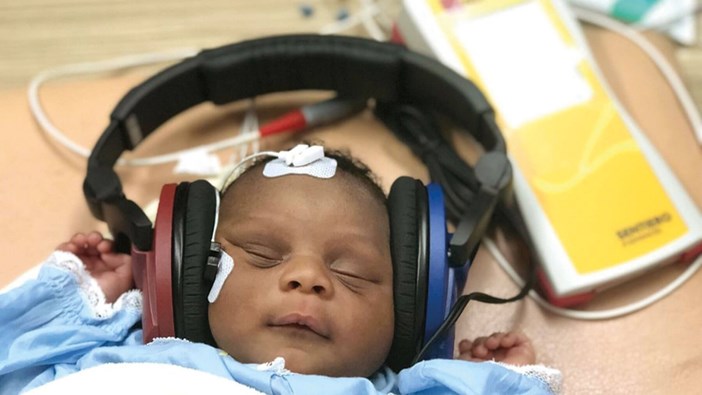
A baby being screened as part of the RCI new‑born hearing screening project.
Speaking of deafness, RCI was recently reported as being one of the African pioneers in launching a state-wide new-born hearing screening project. Can you tell us more about this?
I am a trained ENT and paediatrician. At the end of my training, I went to France for a fellowship in a paediatric ENT department. There I learnt how to administer paediatric and neonatal hearing tests. When I came back to RCI, I bought the audiometric equipment myself. At that time, in the 90s, hearing loss was formally diagnosed when the child was old enough to subjectively perform like an adult. I wanted to do these tests earlier. There were two of us doing this in RCI in children. Progressively, with the assistance of a French department I was able to do neonatal hearing screening with the necessary equipment. However, this was very local and not in a systematic approach with regards to time period.
It was in 2010 that I was able to demonstrate the feasibility of neonatal hearing screening in the new-born in RCI. The first challenge was when to administer this, as OAEs are usually done on day two-to-five and in our context, after delivery, mother and child are discharged after six hours. I read a study that was done by a team in Nigeria and decided to target babies coming in for the BCG, which is mandatory in RCI in the first week of life.
“At that time, in the 90s, hearing loss was formally diagnosed when the child was old enough to subjectively perform like an adult. I wanted to do these tests earlier”
The second challenge related to equipment. We contacted the relevant state health authorities and, whilst their response was favourable, it was still not financially supportive. One big development was the construction of the Hôpital Mère-Enfant de Bingerville - a large maternity and paediatric centre in the capital which is where I work. I was able to expand on screening here but not at the state level I wanted as we lacked the funding.
We had, in parallel to this, already been in contact with MED-EL with regards to the children (aged six to seven) we had already diagnosed with hearing loss. Of these, 60% had a severe to profound hearing loss bilaterally but we had no means of treating them optimally i.e. cochlear implant. We organised a congress in 2014, for which the principal theme was ‘paediatric rehabilitation’, and MED-EL attended. Our partnership began from then. The state wanted the RCI ENT society to demonstrate how screening could be scaled up and MED-EL and the Austrian Development Agency (ADA) helped us financially and partnered up with Path Medical to support this project, which lasted three years. This was supported by the RCI Health Ministry. The screening took place in 14 centres throughout the country. This pilot project has now been validated by the state as of December 2021 and is no longer an RCI ENT society/MED-EL/ADA/Path Medical project but now fully incorporated in the RCI health ministry.
Thank you very much Prof Tanon for the inspirational progress so far and for what you have done for ENT in RCI.
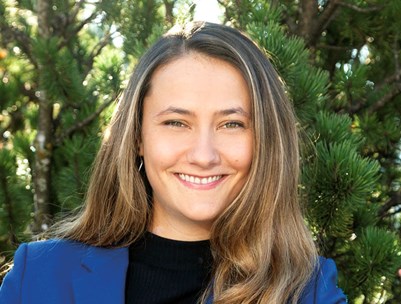
Stephanie Unterrieder, BA, MA,
Project Manager, Business Development Africa and Regional Manager,
MED-EL Medical Electronics, Hearing Healthcare Alliance.
Welcome Stephanie Unterrieder from MED‑EL which has, for more than 40 years, been a trusted partner and innovator in hearing implants. Stephanie is the Project Manager, Business Development Africa, and Regional Manager. Can you tell us a bit more about your role, Stephanie?
I lead a team and projects centred around the public-private partnerships between MED-EL and the Austrian Development Agency (ADA). The ADA is the operational unit of the Austrian Development Cooperation (Foreign Ministry) which seeks to ensure that sustainable development works to the benefit of all people in Africa, Asia, Southeast Europe and the Caucasus.
This sounds very promising! What are your aims?
‘Just like the stirrup on a horse, the Hearing Healthcare Alliance gives social impact programmes a leg up. We get them moving, and we support them through their journey.’We aim to support the hearing healthcare sector in low- and middle-income countries (LMIC).
We are currently active in 14 countries. In Africa: Mali, Senegal, Cote d’Ivoire, Nigeria, Kenya, Ethiopia, Tanzania, Uganda, Benin and Cameroon. In Asia: Pakistan, Nepal, Bangladesh and Bhutan. We, MED-EL with the ADA, have established one of the largest public-private partnerships that was ever achieved with an Austrian company, and this was launched in February of this year. With all our project partners across different countries, we are working together on 4 pillars: capacity and infrastructure development, hearing screening, training and know-how transfer and awareness raising about hearing loss.
So, to conclude, what would you like to say to our readership?
We would like you to have a look at our website for recent news about current project developments. https://hearinghealthcare.medel.com/
The Hearing Healthcare Alliance has been initiated by MED-EL and is supported by the Austrian Development Agency with the aim of supporting and initiating development in the area of hearing healthcare. So we are open to developing new partnerships with individuals and organisations. This project is about developing links between HIC and LMIC.
We are always looking for motivated experts that want to contribute to training and education.


